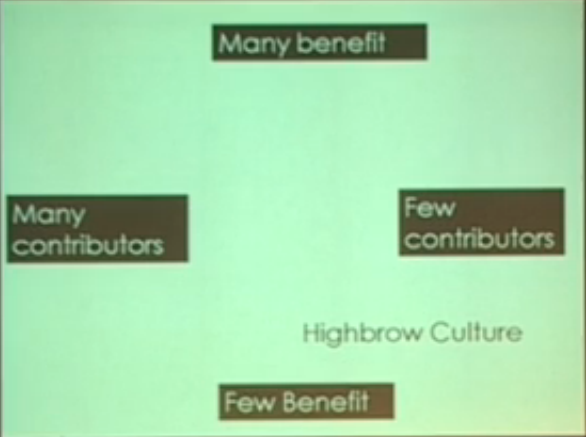In the past, Rasheed Ogunlaru (who presents our monthly Your Life, Your Business workshop), has talked about the importance of building your personal brand.
So this list of tips from Alissa Alvarez at Online MBA is welcome.
90 Tiny Tips to Build Your Personal Brand
Personal branding isn’t something you can just sit down and work on for a day and then forget about. Rather, personal branding is built in small pieces, as your day-to-day actions all add up to the brand that is you. That’s exactly why we’ve found so many small tips that can help you build your personal brand, taking things one tiny step at a time. Read on, and we’ll share 90 tips that can help you slowly but steadily build your personal brand.
Finding Your Niche
Personal branding is all about figuring out who you are and how you want to project your image. Use these tips to help identify what you’re really all about.
Consider what makes you different
1. When determining your niche, you should think about what makes you different from other brands out there.
2. Identify your primary product
3. Think about what you have to offer others, whether it’s a service, resource, or special ability.
4. Find out what your talents are
5. Consider what your talents are, what you’ve been recognized for and what you’re better at than most people.
6. Think about how others identify you
7. Take a look at your brand attributes and confirm that your brand matches what others would say about you.
8. Do something remarkable
9. Instead of playing it self and sticking to what you know, do something that’s worthy of taking notice.
10. Identify your core values
11. Share what really matters to you in order to identify what your core values are.
12. Be unique
13. Don’t feel like you need to copy another person’s brand. Be unique and stand out.
14. Think about your passions
15. Identify the things and ideas that you love, and identify your passions.
16. Ask colleagues and friends to sum up your professional image
17. Get a true reflection of what you’re all about by asking others to define you.
Creating A Message
Follow these tips to find out how you can share the personal branding message you have created.
1. Physically make a message
2. Write a paragraph and tag line that tells your story and emphasizes your speciality and talents.
3. Share your message
4. Once you have your message, be sure to actually share it with someone.
5. Be authentic
6. Don’t create a message that’s about someone else: be true to yourself.
7. Control your message
8. Don’t be too many different things to too many people. Stick to your primary message and focus on that.
9. Find your target audience
10. Consider who you really want to be talking to, and use your target audience to define what kind of presence you want to create for your brand.
11. Know your audience
12. Think about to whom you’re directing your personal brand, and communicate your messages appropriately.
13. Be yourself
14. Let your personality shine through and show the real authentic “you.”
15. Use the right vocabulary
16. Communicate with your audience using the right words from the industry so you can show your understanding of what’s going on.
Credibility
1. Use personal branding to establish yourself as a trusted professional in your industry with the help of these tips.
2. Be useful
3. In everything you do, take a moment to consider how you are being useful to others.
4. Live what you say
5. Have a trustworthy, transparent, and educated voice to build your credibility.
6. Be trustworthy
7. Be careful not to offer anything you can’t provide, and deliver on what you’ve promised.
8. Believe in your brand
9. Commit to and invest in the ideas that support your brand.
10. Create a portfolio of successes
11. Showcase your past work, get testimonials, and do whatever you can do show off how great you are.
12. Find and share great content
13. Create a buzz around your own personal brand by finding great content and sharing them with others.
14. Create a visual hook
15. Find a memorable visual hook that people will enjoy and remember you by.
16. Find out what other leaders are doing right
17. Find the experts and leaders in your profession, and see what they are doing to promote their brands.
18. Cultivate a personal style
19. Select clothing that represents you and makes you stand out from the crowd in an attractive way.
20. Be a leader
21. Lead by helping people, and use leadership to grow your influence.
22. Get featured in the media
23. Find opportunities to be featured in the media, possibly creating even more opportunities for exposure and credibility.
24. Show your confidence
25. Don’t be arrogant, but be sure to project confidence so that others will be comfortable with you.
26. Contribute to Q&A sections
27. LinkedIn, eHow, About.com, and lots of forums offer opportunities for sharing your expertise.
28. Be a speaker
29. Much more effective than just attending, speaking at events shares the opportunity for showcasing your expertise.
30. Be consistent
31. Make sure your resume, LinkedIn, and Facebook are all saying the same thing.
32. Win awards
33. First, do work that’s worthy of awards, and be sure to apply for awards in your field. This can bring lots of recognition and credibility to your personal brand.
34. Take a writing class
35. The way you write has a major impact on how you are perceived, so take a writing class to make sure you’re getting it right.
36. Stay on top of trends
37. Educate yourself and stay on top of newly emerging trends in your industry.
38. Back everything up with proof
39. Share objective proof to back up broad statements, using numbers, dates, statistics, and more.
40. Toot your own horn
41. Publicize awards, achievements, and anything else that’s remarkable so that people actually know about it.
Efficiency
1. Keep personal branding from taking over your life with these tips that will help you streamline your efforts.
2. Interact effectively
3. Give yourself a time window for interaction so that you don’t spend all day networking and using social media.
4. Determine where to invest your energy
5. Building a brand is a major undertaking, and there’s only so much you can do in a day. Think about where you really want to invest your energy in brand building.
6. Be brief
7. State your value quickly and in bite sized chunks, or you run the risk of droning on and becoming forgettable.
Online Presence
1. Maintain an online presence that reflects who you are with the help of these tips.
2. Own your domain
3. Register your name or unique URL to project a more professional image.
4. Have a great website
5. Your website is still like a virtual lobby, offering a jumping off point for your entire online presence.
6. Learn about SEO
7. Search engine optimization might sound a little scary and daunting, but in reality, it’s actually quite easy, as long as you’re creating quality content. Taking the time to do SEO right can make all the difference when making your brand stand out.
8. Keep your personal and company brand separate
9. Establish yourself as a person, rather than a company, so that you don’t limit the power of your personal brand. This is especially helpful if you may not be with the company forever.
10. Be a polite emailer
11. Check your grammar, etiquette, and writing skills so that you’re communicating like a professional.
12. Pay attention to your email address
13. Your email address offers a significant opportunity for building your brand, especially if you use your real name.
14. Do your best to lock down your name online
15. Whether you have a common name or an unusual one, put out as much quality content as you can, with your name one it, so that you can better control your online presence.
16. Find out where you are online
17. Do a Google search to check in on your online presence to see you you’re doing and if you need to make any changes.
18. Monitor your online brand
19. Carefully keep an eye on what is being said about you online, and make corrections as needed.
Networking
1. Get connected and establish your brand with others by following these tips.
2. Find relevant people
3. Seek out the recommendations of colleagues, check out Twitter, and more to find relevant people that you should be connecting with.
4. Join industry associations
5. Meet up with people who can help you build your brand and career by joining industry associations.
6. Be generous with your time
7. Take time to do charitable work and go beyond the call of duty.
8. Say yes more often
9. Accept more invitations and go to more events, finding opportunities and taking advantage of ways to explore and experience.
10. Have business cards
11. Even if you don’t have a job, create business cards with your contact information to share with others who want to contact and remember you.
12. Do your research
13. Before any networking event, be sure to know who is going and what will be discussed so that you’re well prepared.
14. Be accessible
15. Let people know you’re out there, and that they can reach you on a regular basis.
16. Don’t miss out on events
17. Attend conferences, seminars, and other events to get out there and shake hands and meet other relevant people.
18. Ask for testimonials
19. Ask other people to recommend you for your expertise, and then be sure to publish what they’ve said about you.
20. Be an active alumni
21. Make the most of where you went to school by joining the alumni association and taking advantage of networking events.
22. Show support for others
23. Be passionate about helping other people when they need it.
24. Learn how to introduce yourself
25. Be ready to communicate who you are with others, concisely sharing the answer to “Tell me about yourself.”
26. Get connected with passionate people
27. Find other people who live passionately, and get together with them regularly for inspiration.
28. Take guest blogging opportunities
29. Extend your reach beyond your immediate network by taking opportunities to guest blog and share your expertise.
30. Promote others rather than yourself
31. Instead of spending all your time promoting yourself, take the time to point out what others are doing really well.
Job Hunting
1. These personal branding tips are especially relevant for job hunters.
2. Work for free
3. Your experience is worth its weight in gold, so when it comes to getting a job, any past experience can really pay off, even work you’ve done for free.
4. Create a value statement
5. Highlight your values and strengths to get the attention of a hiring manager.
6. Put your resume online
7. Add social features, photos, and more to your photo by putting it online.
8. Quantify your results
9. Prove your value by showing quantified outcomes.
Social Media
1. Follow these tips for great ideas in building your personal brand through social media.
2. Carefully consider which tools you want to use
3. If you can’t effectively use a social media tool, there’s little point to having it at all. A poorly managed social media presence can be worse than not having one in the first place.
4. Listen up and stay in the loop
5. Don’t be one sided: be sure to listen and respond to what others are saying.
6. Fill out your profile completely
7. Fill out all of the information fields to promote everything important about yourself.
8. Go out and find new followers
9. New followers will find you, but you can build your presence much faster by seeking them out yourself.
10. Listen first
11. See what others are saying on social networks, and even set up Google Alerts to listen in on how social networks are working before you get started with them.
12. Engage and interact
13. Participate in the back and forth of social media, engaging with others and interacting with content.
14. Create multiple streams
15. Be ubiquitous, creating an online presence on Facebook, YouTube, Twitter, and more, as many as you can reasonably maintain on a regular basis.
16. Be adaptable
17. Social media is constantly changing, so always be ready to adapt to new developments with a consistent approach.
18. Don’t forget videos
19. Video projects can pay off in a big way and offer a great way to really showcase your brand.
20. Manage and optimize your social media systems
21. When creating your social media accounts, set them up so that they can be automatically updated, pushing to your blog, home page, and more.
22. Stay interesting
23. Don’t just set up social media and walk away: keep things interesting by writing, sharing videos, photos, and more.
24. Curate content like it’s fine art
25. Think carefully about how you share links, news, and resources, curating your content like a museum director might select works for an exhibit.
26. Use the same profile photo
27. Make your online presence easily recognizable by using the same profile photo everywhere.
28. Use a consistent name, too
29. Build recognition by using the same name in everything you do online, preferably one that is close to your actual name or profession.
30. Schedule regular posts
31. Stay on top of your online presence with scheduled tweets and blog posts, so you always have something new to share.
32. Think before you Tweet
33. Be careful not to write anything that’s embarrassing or offensive, or anything you wouldn’t get away with in any other professional setting.
34. Keep everything PG
35. Be careful not to post anything you wouldn’t want your grandma (or potential employers) to see.
36. Point to your social media presence elsewhere
37. Promote your social media presence everywhere, on your website, blog, and even email.
38. Bring offline relationships online
39. Ask your “real life” friends if they are on Twitter or Facebook.
40. Blog your voice on the web
41. Blogging is a great way to find natural traffic without too much marketing effort.
42. Don’t give away too much personal information
43. Be careful not to over-share information or be inflammatory when building your brand.
44. Make some accounts private
45. If you feel the need to share things online that aren’t professionally appropriate, be sure to make those accounts private.
 As we approach our seventh birthday, we are trying to conduct a census of all our customers – past and present.
As we approach our seventh birthday, we are trying to conduct a census of all our customers – past and present.






















